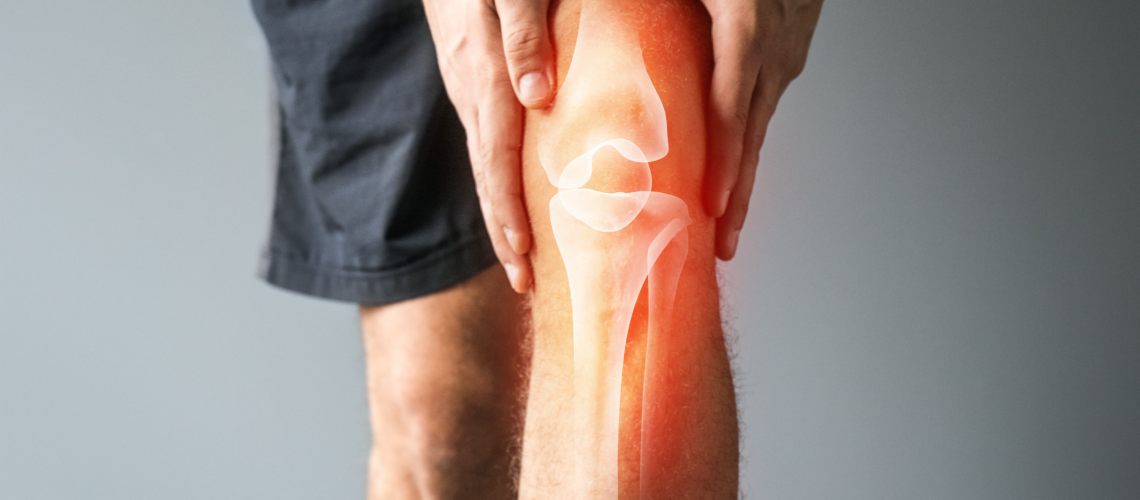Popping or cracking sensations in a joint – such as the knee or shoulder – is fairly common. From crunching sounds in the knee when a patient traverses the stairs or crackling/ grinding sounds – or a crunching sensation – when a patient moves their shoulder is known as “Crepitus”.
Crepitus is when there is a sensation or noise with joint movement which can be described as clicking, popping, cracking, grating, or crunching. Crepitus can affect any joint in the body and joint problems are very common. The condition is more common as a patient gets older, although anyone can experience it at any age.
Patients most often notice Crepitus in their knees, but it also happens in other joints such as the shoulder. Crepitus usually occurs when joints or ligaments rub together as a patient moves or compresses them – such as a tissue snapping when it rubs over something or a ligament snapping over the edge of a joint. Joint popping sounds can also mean that air is moving in the joint. The liquid inside a joint is called “synovial fluid”. It is there to aid joint cartilage to glide more easily. When a patient pushes or pulls or moves their body in a way that puts force on the joints, that pressure can manifest into gas bubbles that then “pop.” Air seeps into the soft tissues around the joint – such as over the kneecap and when the bubble bursts, a cracking sound can be heard.
In most cases, Crepitus is harmless. However, if it is accompanied by pain discomfort, or swelling, it could be a sign that you have an underlying condition. In addition to the bubbles of air popping inside a joint, there are many other causes of Crepitus or Joint Popping.
These include:
Osteoarthritis: In arthritis, cartilage begins to rub away, leaving bones unprotected and creating inflammation. When bones rub and grind together, it can be painful. In osteoarthritis, as joints wear out, the normally smooth cartilage becomes thinner or irregular. As these worn-out joint surfaces roll or glide across each other, the joint may make noise. Some studies are looking to link Crepitus to the incidence of Symptomatic Osteoarthritis.
Rheumatoid arthritis: A chronic inflammatory disorder, this condition occurs when the immune system accidentally damages the lining of the joints. This eventually leads to erosion which results in crepitus.
Torn cartilage: A tear in the cartilage (such as the knee) usually occurs due to injury. ,
Patellofemoral pain syndrome (PFS): More commonly known as “Runner’s knee”, this cognition can cause crepitus along with pain behind the kneecap. It usually happens when a patient increases their activity levels such as running, squatting, or jumping.
Tendonitis: This condition is inflammation of a tendon.
A meniscus tear in the knee
Impingement to the Shoulder where tissue rubs together within the shoulder blade, irritating the bursa and tendons.
Labral tears – usually follow an injury to the shoulder such as dislocation
Rotator cuff tears – When the tendons in the shoulder within the rotator cuff tear from overuse or heavy overhead lifting, pain is often accompanied by a cracking sound.
Bursitis of the shoulder
Dr. Anijar and his team-approach at their state-of-the-art Spine and Wellness Centers of America (SWCA) facility approach patient care on a highly individualized basis. The first step is a diagnosis. Dr. Anijar will perform a physical examination of the joint, followed by imaging studies such as X-ray, MRI, CT scan, and maybe blood tests to rule out autoimmune conditions such as rheumatoid arthritis.
Noninvasive Treatments for Crepitus include simple bracing or splinting to Physical therapy.
In more severe cases, corticosteroid injections may be used to help reduce inflammation. If the Crepitus is tied to a condition such as rheumatoid arthritis, treating the underlying cause will also be necessary.
Crepitus of the shoulder rarely involves soft tissue and, thus, is more likely to be serious. If shoulder arthritis is suspected, a plan of treatment for the long haul will be recommended.
Dr. Anijar and his team are known for a multidisciplinary approach backed by the most advanced technology and cutting-edge treatment programs so that each patient receives their own customized, comprehensive treatment plan. Once a firm diagnosis is in hand, the team will best know how to treat it and what plan will work best to return patients to everyday activity.


